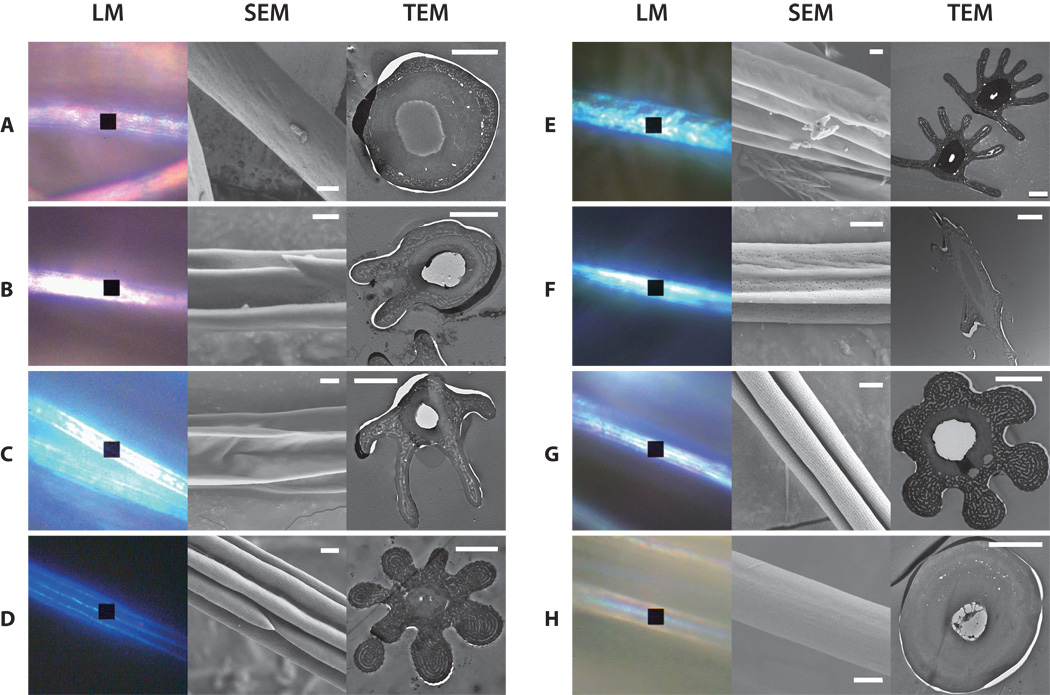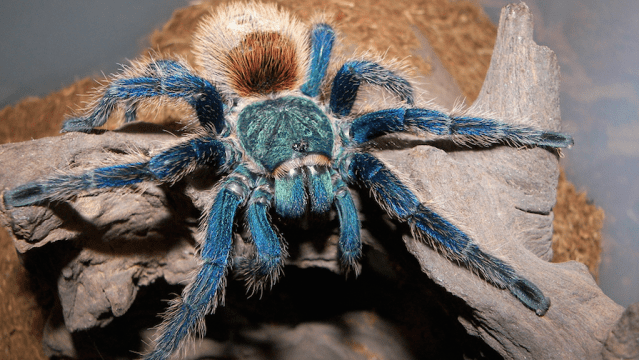A very particular shade of blue hair has evolved independently on eight separate occasions and in at least three different ways in tarantulas, a new study finds. And scientists are having a hell of a time figuring out why.
Like most animals with a blue hue, tarantulas don’t get their colour from pigments. Rather, the striking cobalt we perceive is caused by nanoscale lattices that bend and scatter light in specific ways. So called “structural colours” are used for everything from attracting mates to warding off predators. Usually, the function of these dazzling displays is obvious; in tarantulas, it’s an ever-deepening mystery.
As reported this week in Science Advances, a team of researchers has completed a detailed optical, morphological, and evolutionary analysis of blue hair colour in tarantulas. At least forty species in eight distinct lineages come in blue — and not just any ol’ shade. Across those eight groups, hair colour converges within an extraordinarily narrow band of wavelengths, centered around 450 nanometres. That finding suggests natural selection is playing a big role. But what’s driving it?

The most obvious hypothesis is that tarantula blue is a side-effect of some other hair property, for instance, the ability to repel water. But if that were the case, we’d expect each type of tarantula hair to have a similar molecular architecture. Instead, the researchers found at least three distinct nanoscale configurations, including multi-layered sheets of cells, and semi-ordered spongy structures.
Mate attraction also seems to be off the table, seeing as tarantulas have very poor colour vision and don’t perform any conspicuous courtship displays. The most likely explanation seems to be that tarantulas are signalling another species — perhaps a predator — but at present “the receiver of that signal remains unclear.”
In any case, it’s a fascinating illustration of how natural selection can produce similar outcomes from very different starting points. The ways of evolution are oft mysterious, but there is a method to the madness.
[Read the full scientific paper at Science Advances h/t Science News]
